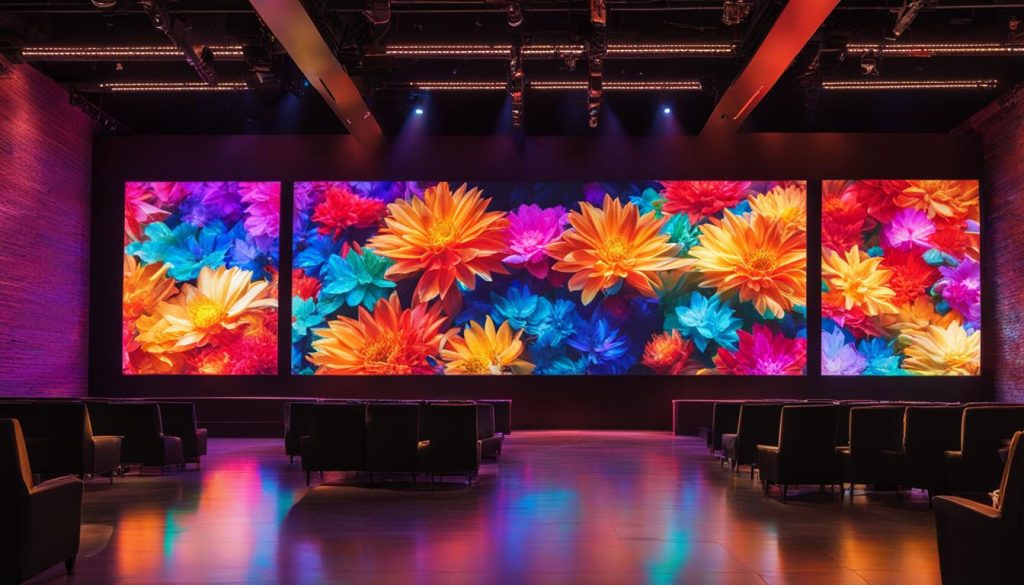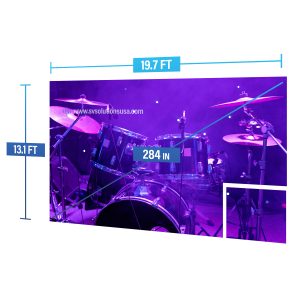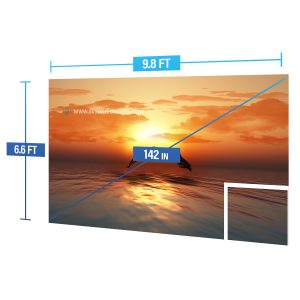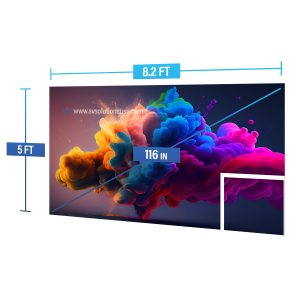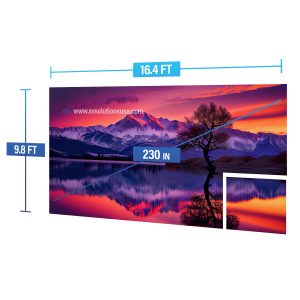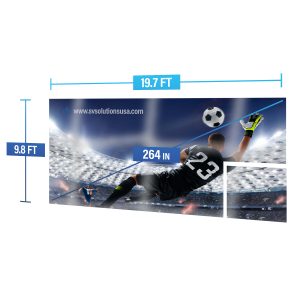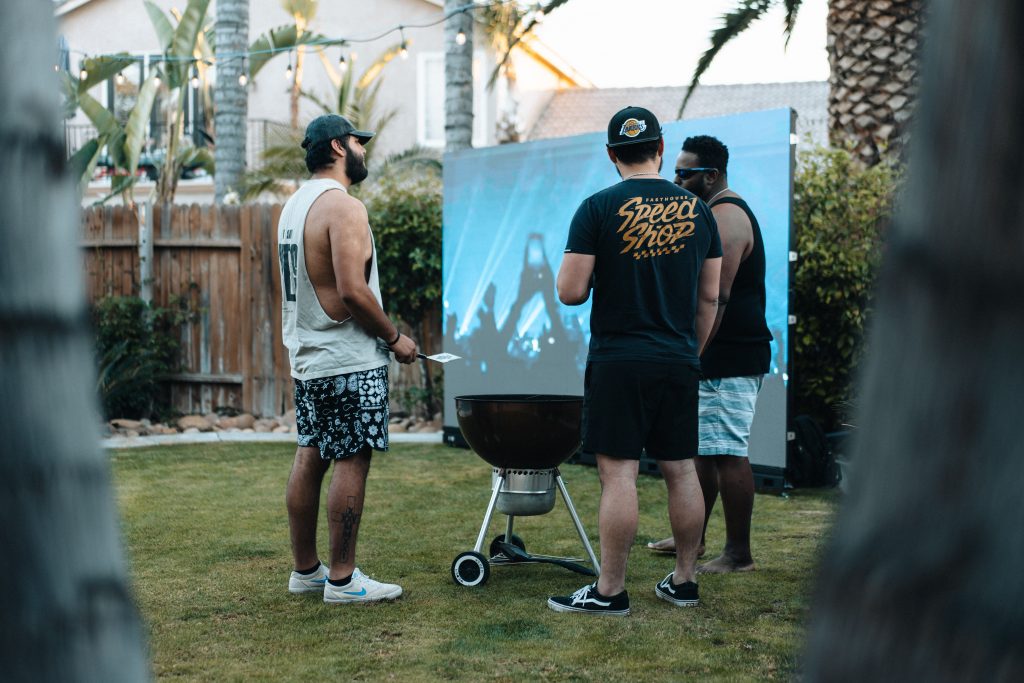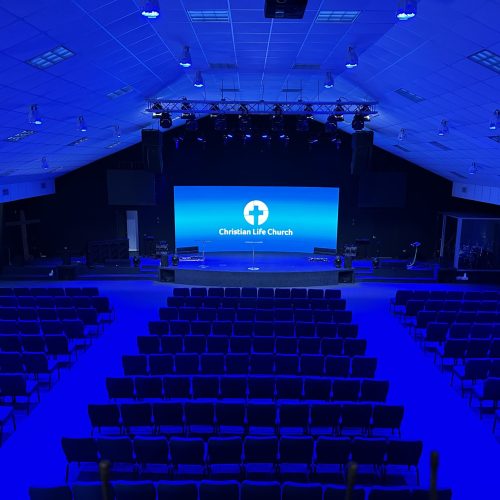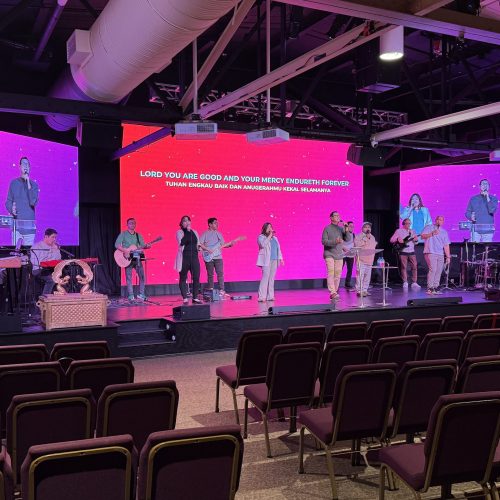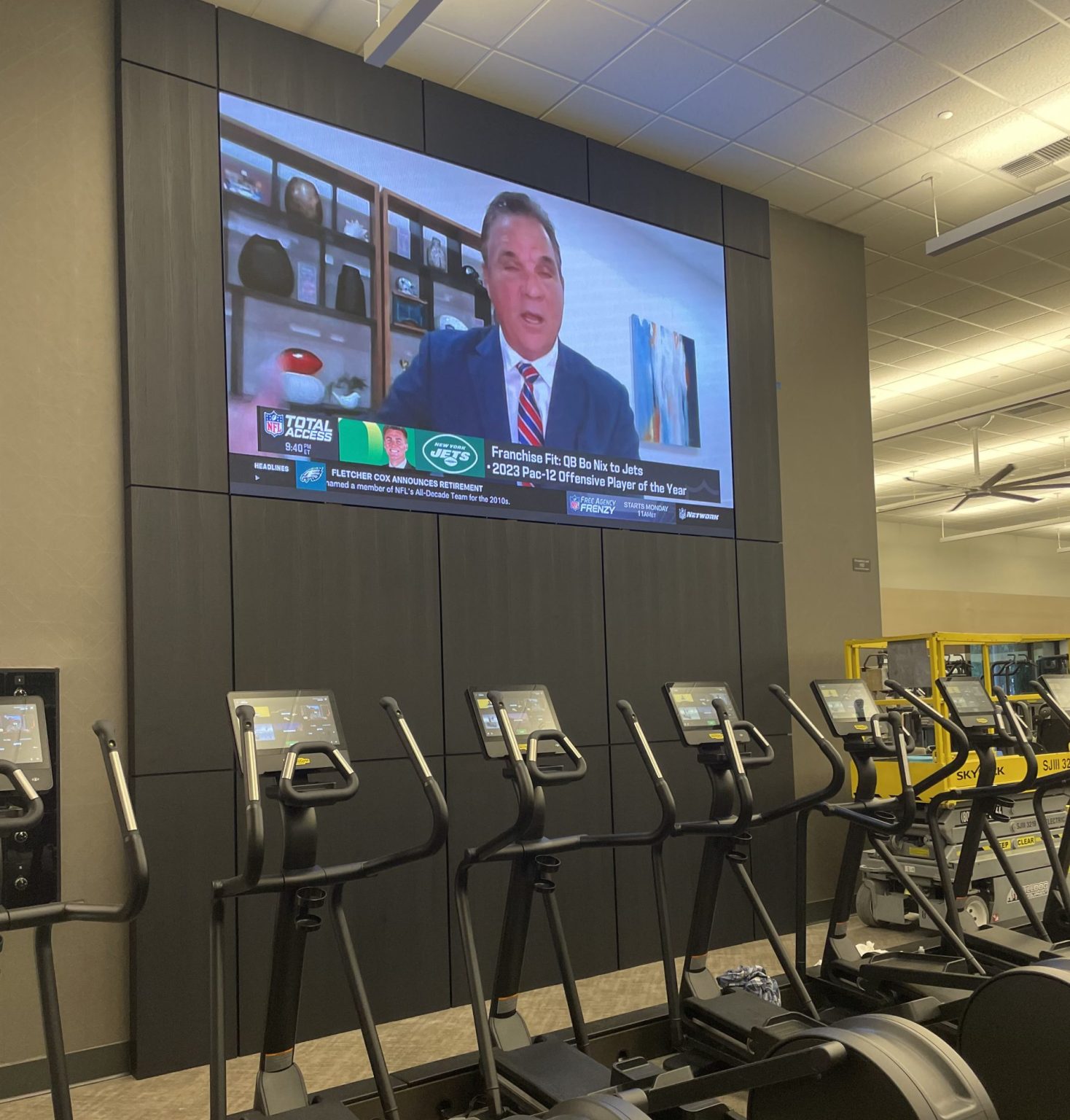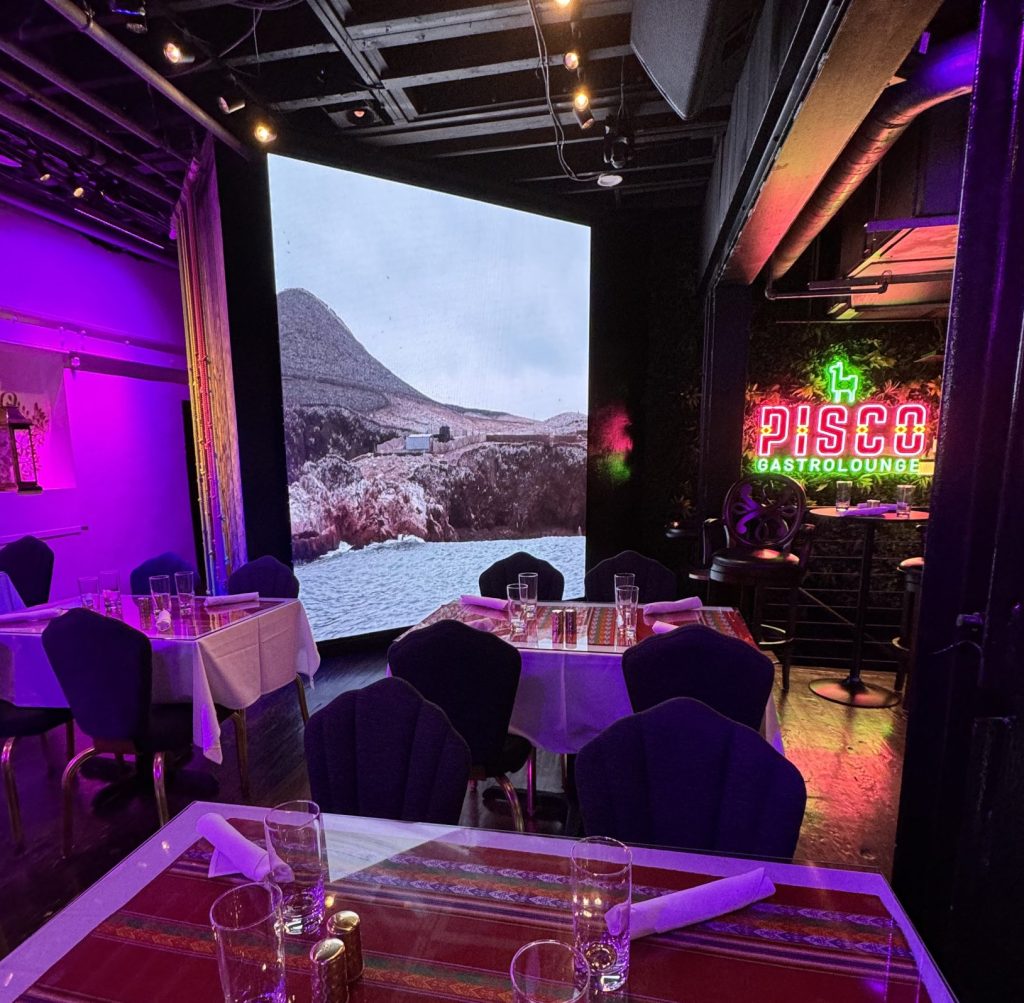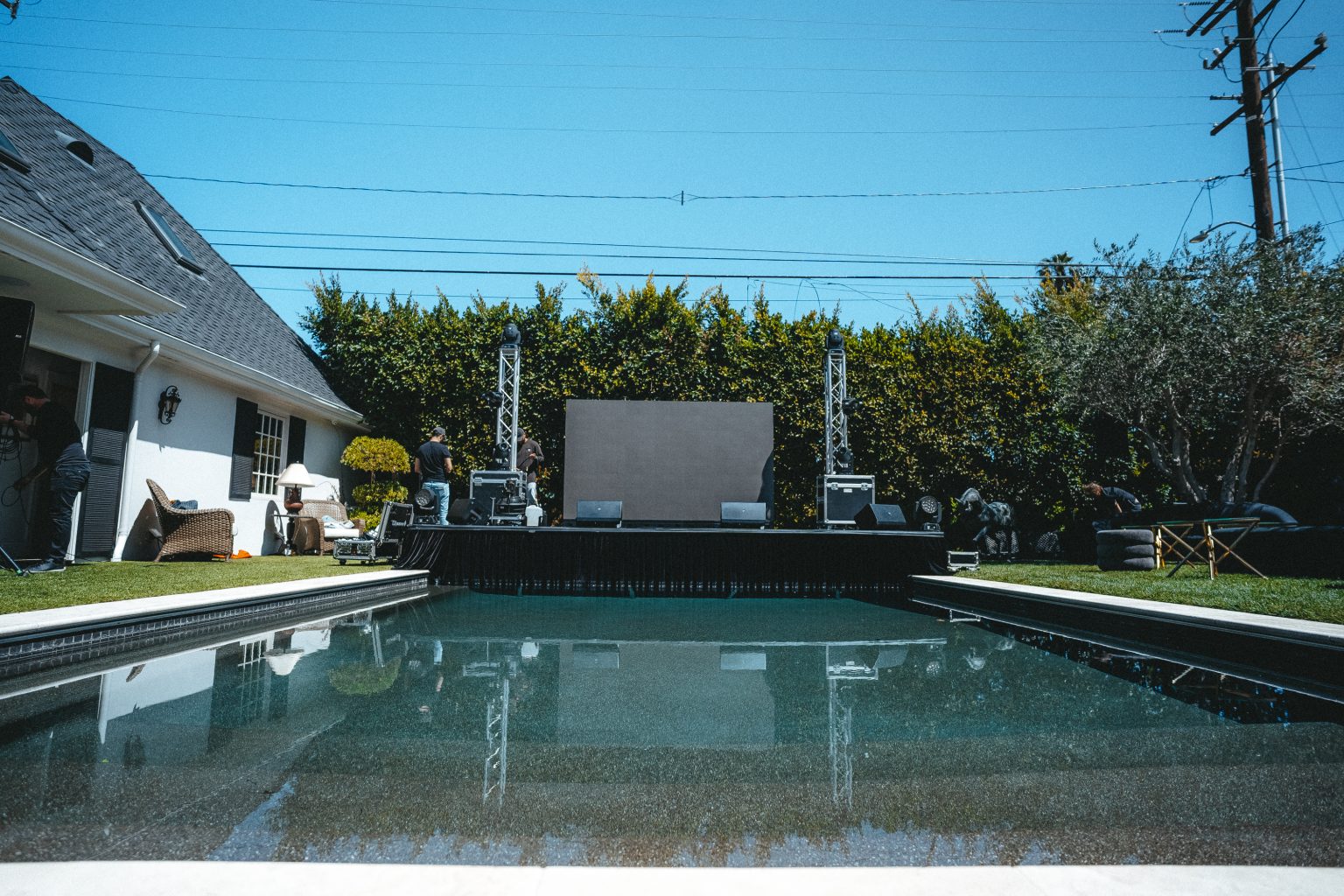When it comes to LED screens, the configuration is everything. At Sound & Video Solutions, we know that the right setup can make all the difference in achieving optimal performance and maximum impact.
In this article, we’ll take you through the key aspects of LED screen configuration, from initial setup to advanced configurations and troubleshooting. Whether you’re setting up a single screen or a video wall, we’ve got you covered.
So, let’s dive into the world of LED screen configuration and unlock the full potential of your displays.
Optimizing LED Screen Setup
At Sound & Video Solutions, we believe that optimizing LED screen setup is crucial for achieving the best possible display quality. There are several key factors to consider when setting up an LED screen, from screen size and aspect ratio to resolution and positioning.
Firstly, it’s essential to choose the right screen size for your space. If the screen is too small, it may not be visible from all angles, while a screen that is too large can overwhelm the room. We recommend taking measurements of the viewing area and testing different screen sizes to find the perfect fit.
Aspect ratio is another key consideration. This refers to the ratio of the screen’s width to its height and can affect the clarity of the displayed content. We suggest choosing an aspect ratio that matches the content you’ll be displaying to avoid any distortion.
Resolution is also a critical factor in optimizing LED screen setup. The higher the resolution, the sharper and more detailed the display will be. It’s essential to choose a resolution that matches the screen size and aspect ratio, ensuring that the image remains clear and crisp.
Proper positioning of the LED screen is also key to achieving optimal visibility. The screen should be placed in a location that allows for unobstructed viewing from all angles. Additionally, we recommend considering the angle of the screen to minimize any potential glare or reflection.
By taking all of these factors into account and optimizing your LED screen setup, you can ensure that your display looks its best and delivers the intended message to your audience.
Creating an Effective LED Screen Layout
When it comes to LED screen configuration, the layout is everything. A well-designed layout not only enhances the visual appeal of your LED display, but it also ensures optimal visibility and functionality. In this section, we’ll explore different layout options and provide tips for achieving a visually appealing and functional arrangement.
Single-Screen Setup
A single-screen setup is the simplest and most common LED screen layout. It involves mounting a single LED screen on a wall or stand, with the content displayed across the entire screen. When setting up a single-screen LED display, it’s important to consider the viewing distance and angle of your audience. This will help you determine the appropriate screen size and positioning for maximum impact.
Video Wall Setup
Video walls are large-scale LED displays created by combining multiple LED panels or screens in a grid-like configuration. Video walls are ideal for large venues such as stadiums, conference centers, and shopping malls, where a single screen may not suffice. When designing a video wall layout, it’s important to consider the screen bezel size, content resolution, and content integration. Bezel-less displays and seamless content integration can create a more visually cohesive display and an immersive viewing experience.
Multi-Panel Setup
A multi-panel setup involves mounting multiple LED screens or panels adjacent to each other, creating a larger display. Multi-panel setups are commonly used in retail environments for advertising and promotional displays. When designing a multi-panel setup, it’s important to ensure that the screens are calibrated accurately and that the content is evenly distributed across all panels.
Tip: When designing an LED screen layout, consider consulting with a professional LED display company like Sound & Video Solutions. They can help you optimize your layout to achieve the best possible results.
- When choosing the layout for your LED screen, consider the viewing distance and angle of your audience for maximum impact.
- In a single-screen setup, ensure that the screen size and positioning are appropriate for the viewing environment.
- When creating a video wall setup, consider using bezel-less displays and seamless content integration for a more visually cohesive display.
- When designing a multi-panel setup, ensure that the screens are calibrated accurately and that the content is evenly distributed across all panels.
By considering these factors, you can create an effective LED screen layout that maximizes the impact of your content and ensures optimal visibility and functionality.
Fine-Tuning LED Display Panel Setup
Now that you have your LED screen set up, it’s time to optimize the display panel setup. This is where the real magic happens, and it’s essential that you get it right. A poorly configured LED panel can ruin even the best setup, causing color inconsistencies, flickering, and uneven brightness.
One of the first things to consider when fine-tuning your LED display panel setup is panel calibration. This involves adjusting the display panels to ensure that colors are accurate and consistent across the entire screen. A professional calibration tool can help ensure that colors are correctly displayed, and that there are no visible color shifts.
Brightness adjustment is also critical to a successful display panel setup. You’ll want to ensure that all panels are set to the same brightness, so that the overall image appears uniform. Similarly, pixel mapping techniques can ensure that the image is sharp and clear, with no artifacts or pixelation.
Tip: If your LED screen is part of a larger setup, such as a video wall, it’s essential to ensure that all panels are calibrated to match each other. This will help guarantee that there are no visible seams between panels, creating an immersive visual experience.
At Sound & Video Solutions, we specialize in LED screen configuration, and can help fine-tune your display panels to perfection. Our team of experts can calibrate every panel to perfection, ensuring that every image is vivid, accurate, and consistent. Whether you’re using your LED screen for advertising, gaming, or any other purpose, we can help unlock its full potential.
Enhancing LED Screen Performance with Advanced Configurations
At Sound & Video Solutions, we understand that sometimes, a standard LED screen configuration may not be enough to create the immersive experience you desire. That’s why we offer a range of advanced configurations, with a particular focus on video wall setups.
Bezel-less Displays
A video wall can be a stunning centerpiece for any space, but the bezels between each panel can detract from the overall effect. Our bezel-less display technology allows for seamless integration between panels, creating a truly immersive display.
Seamless Content Integration
The ability to display content seamlessly across an entire video wall is a must-have for many applications. Whether you’re showcasing a product demo or a live sporting event, our advanced control systems ensure that your content looks seamless and professional.
Advanced Control Systems
In addition to seamless content integration, our advanced control systems provide full control over your video wall display. Whether you need to adjust brightness, contrast, or color balance, our systems make it easy to fine-tune your setup for optimal performance.
With our range of advanced LED screen configurations, we’re confident that we can help you create a truly unforgettable visual experience. Contact us to learn more about our services and how we can help you take your LED display to the next level.
Troubleshooting Common LED Screen Configuration Issues
At Sound & Video Solutions, we understand that even the most meticulously planned LED screen configurations can encounter problems. Here are some common issues that may arise during LED screen setup, along with troubleshooting tips to help you resolve them quickly and effectively.
Color Inconsistencies
If you notice that colors on your LED screens appear inconsistent or inaccurate, the first step is to check the color settings. Be sure that the color temperature, contrast, and saturation are set correctly. If these settings are correct, the issue may be caused by a faulty cable or connection. Try replacing the cable, or checking the connection points for any damage or debris.
Flickering Screens
Screen flickering can occur due to a variety of reasons, including faulty power cords or connections, low refresh rates, or issues with the LED driver board. Check all power cords and connections to ensure they are secure and undamaged. If the issue persists, try adjusting the refresh rate to a higher level. If none of these options work, you may need to consult a professional LED screen technician to diagnose and repair the problem.
Uneven Brightness
If you notice that some areas of your LED screen appear brighter or darker than others, this may be due to an issue with the power supply or a malfunctioning LED module. Check the power supply and connections for any issues, and try adjusting the brightness settings. If the problem persists, it may require replacing the affected LED module or calling in a professional for further troubleshooting.
If you encounter any of these issues or other LED screen configuration problems, Sound & Video Solutions can help. Our team of experts can diagnose and resolve a wide range of LED screen issues, ensuring that your display is working at optimal performance.
Key Takeaways for LED Screen Configuration
LED screen configuration is crucial for achieving optimal visibility and clarity in your displays. As we’ve explored throughout this article, there are several key factors to consider when setting up an LED screen.
Firstly, optimizing LED screen setup involves careful consideration of screen size, aspect ratio, resolution, and positioning. By ensuring these elements work together harmoniously, you can create a display that is both visually striking and easy to see from all angles.
Next, creating an effective LED screen layout requires careful planning and consideration of different options. Whether you’re using a single screen, video wall, or multi-panel setup, you can use these layouts to create a visually appealing and highly functional display.
Once your layout is set up, fine-tuning LED display panel setup is essential for getting the best possible image quality. This involves panel calibration, color accuracy, brightness adjustments, and pixel mapping techniques.
If you want to take your LED screen configuration to the next level, you can explore advanced configurations like video wall setups. These configurations typically involve bezel-less displays, seamless content integration, and advanced control systems that maximize the impact of large-scale LED video walls.
While LED screen configuration may seem daunting, remember that common issues can be resolved with proper troubleshooting techniques. If you’re experiencing issues like color inconsistencies, flickering, or uneven brightness, Sound & Video Solutions can help.
Final Thoughts
By leveraging these insights, you can unlock the full potential of your LED screen. Remember, effective LED screen configuration begins with careful planning of screen setup, layout, and panel arrangements. By keeping these factors in mind, you can create a display that is both visually stunning and easy to use.

